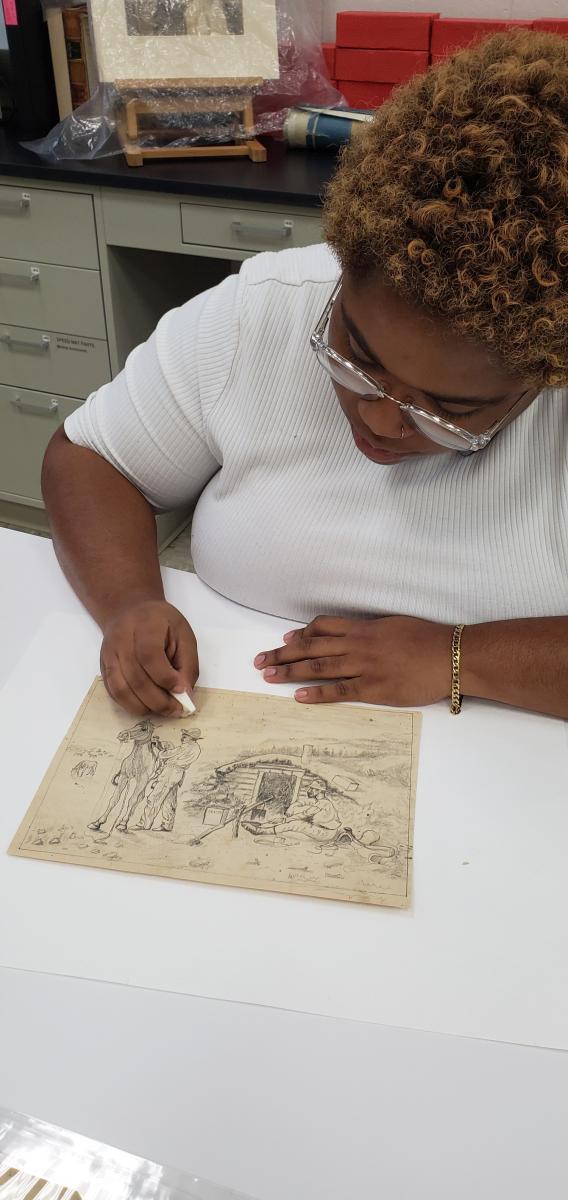The Ford Conservation Center has been treating a series of sketches by Iowa artist George Simons. The sketches were gifted by a private donor to PACE (Pottawatomie Art Culture Entertainment) in Council Bluffs, IA.
Pencil Sketch of Omaha Village in Papillion, Nebraska, by George Simons, Before Treatment
George Simons was born in Canada in 1834 and his family eventually moved to Illinois. While in Illinois, Simons met railroad pioneer Grenville Dodge. Simons traveled with Dodge as a cook while Dodge surveyed for the Mississippi and Missouri Valley Railway. During his time off, Simons would sketch the landscape around him, and it was said he had a photographic memory. Dodge came to rely on Simons’ sketches as references. In addition to his drawings, Simons also kept detailed writings in the form of poetry and a diary. In addition to landscapes, Simons sketched scenes of Native American villages, white settlers, wagon trains, steamboats and locomotives. He joined the Union Army in 1862 and continued drawing during the Civil War.
Simons settled in Council Bluffs and worked as a repairman, theater operator and art teacher. Simons himself never received formal art training but his work captures a time and place before photography. Free from artistic flourishes, his drawings hold their value as a historic record of frontier life. His work influenced fellow Iowa artist Grant Wood who used Simons’ painting of Kanesville (the original name for Council Bluffs) to inspire his mural “Early Days of Kanesville.”
PACE received a grant from the State of Iowa to preserve, mat and frame 25 of the sketches that have local and regional significance. The sketches consist of pencil drawings on a variety of paper supports and sizes. A majority of the drawings include handwritten inscriptions of the location, done in graphite by the artist. Most of the drawings are not signed by the artist.

Kayla, a pre-program intern at the Ford Center, carefully cleans the surface of a sketch by George Simons.
The drawings are in fair condition overall. All of the papers have become discolored to some degree as a result of natural aging and photo-oxidation from light exposure. The paper supports have various condition issues, with some having a higher acidic content and embrittlement. There are degrees of structural issues like tearing and paper loss. Most of the drawings have some type of staining, accretions on the surface, or marks from handling.
Hilary LeFevere, Paper Conservator, takes one of the sketches out of a water bath. Washing the drawings helps reduce the acidic byproducts from the paper.
Ford Center staff are surface cleaning each drawing, being careful to avoid the drawn media. Fly specks and accretions are carefully removed with scalpels. The drawings will be washed, tears repaired and losses filled. Treatment will stabilize the drawings for long-term preservation and help return them to closer to their original appearance. The Ford Center will also mount the drawings on acid-free, lignin-free mat board and cut custom window mats for the drawings. PACE will have a small preview of these sketches during their grand opening in February 2020 and will have a larger exhibition of Simons’ sketches and paintings during the Fall of 2020.




